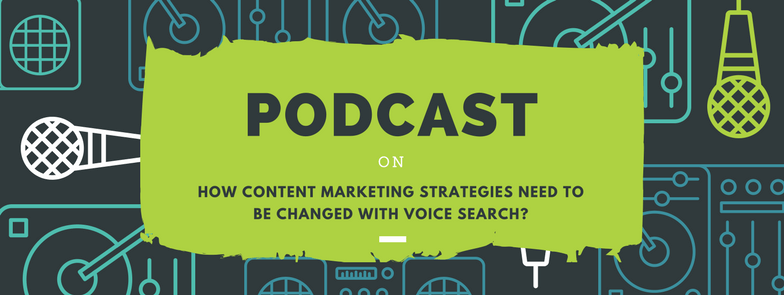.jpg)
In the online world, making sure your website runs well is super important. One cool way to do that is by using something called API integration. It's like a digital helper that connects different parts of your website smoothly.
So, let's talk about why it's a big deal and how it makes your website work better. How API integration improves website performance is our main focus here.
API integration is like the teamwork behind a smooth-running website. Imagine APIs as digital helpers that let different parts of your site talk to each other. This teamwork makes your website faster, smoother, and more user-friendly. APIs, or digital connectors, link up various features such as payment systems and social logins.
This connection ensures quick, real-time updates and helps your site work seamlessly. It's like adding cool features effortlessly, making API integration crucial for an awesome website that runs well and provides a great experience for users.
Think of APIs as the behind-the-scenes heroes that help different parts of your website communicate and share info. When we bring these heroes into play, your website gets faster, works smoother, and gives users a better experience.
Stick around as we break down this tech talk and show you why API integration is a game-changer for making your website awesome!
Now, let us know How API Integration Improves Website Performance in 5 simple steps:
Step 1: Efficient Resource Handling
Efficient resource handling through API integration is one of the Benefits of using API gateway on the website. Here's how it brings about notable advantages:
Optimized Server Usage: API integration allows websites to request and receive only the necessary data. This targeted approach prevents unnecessary strain on servers by ensuring that the server delivers precisely what the website requires. As a result, server resources are used more efficiently, contributing to improved website responsiveness.
Reduced Latency: By streamlining the communication between the website and external APIs, efficient resource handling minimizes the time it takes for data to travel back and forth. This reduction in latency translates to faster load times for web pages, offering visitors a smoother and more enjoyable browsing experience.
Bandwidth Conservation: Unnecessary data transfer can consume valuable bandwidth. API integration enables websites to retrieve specific data, avoiding the transfer of redundant or excess information. This not only conserves bandwidth but also accelerates the loading of web content.
Step 2: Smart Catching Strategies
Smart caching strategies, as part of the process of API integration on the website, offer significant advantages in improving overall performance. Below is a summary of the main advantages:
Smart caching involves storing frequently requested data temporarily. When a website needs specific information, it can retrieve it from the cache rather than making a new request to the API. This significantly reduces the time it takes for the website to respond to user actions, resulting in faster loading times.
By retrieving cached data, the website minimizes the need for the server to generate the same information repeatedly. This not only speeds up response times but also decreases the load on the server.
Step 3: Parallel Processing Magic
Harnessing parallel processing through API integration produces one of the major benefits of using API gateway on the website. Below is a summary of the main advantages:
Parallel processing enables different parts of a website to communicate with APIs concurrently.
This means that multiple tasks can be executed simultaneously, preventing bottlenecks and ensuring a more efficient use of resources.
Each component can fetch or send data independently, contributing to quicker overall response times.
With parallel processing, complex workflows can be streamlined.
Instead of waiting for one task to complete before starting the next, multiple tasks can progress simultaneously.
This optimized workflow minimizes idle time, allowing the website to accomplish more in a given timeframe.
When various components of a website can fetch data from APIs simultaneously, the overall speed of data retrieval improves.
Users experience faster page loads, contributing to a more responsive and engaging browsing experience.
Step 4: Data Compression Techniques
Data compression techniques, as a crucial aspect of the process of API integration on the website, yield substantial benefits in optimizing overall performance. Here's a breakdown of the key advantages:
Faster Data Transmission:
Data compression reduces the size of the information exchanged between the website and APIs.
This results in faster data transmission, as smaller amounts of data can be transferred more quickly over the network.
Users experience improved page load times and quicker interactions with the website.
Bandwidth Conservation:
Smaller data sizes mean reduced bandwidth consumption.
This is particularly valuable for users with limited network resources or those accessing the website on mobile devices.
By conserving bandwidth, data compression ensures a more efficient use of available network capacity.
Minimized Latency:
The streamlined data, thanks to compression, contributes to minimized latency.
The time it takes for data to travel between the website and APIs is significantly reduced.
This reduction in latency enhances the responsiveness of the website, creating a more seamless and enjoyable user experience.
Step 5: Predictive Fetching Techniques
Integrating predictive fetching techniques into the process of API integration on the website introduces transformative advantages, significantly enhancing overall performance. Here's a breakdown of the Benefits of using API gateway on the website:
Proactive Data Retrieval: Predictive fetching allows the website to anticipate the data it might need in the future. By proactively fetching relevant information before it's explicitly requested, the website can present content more quickly, reducing wait times for users and creating a more seamless browsing experience.
Minimized Loading Times: Anticipating user actions and pre-fetching necessary data means that when a user requests specific information, it's already available locally. This minimizes loading times as the website doesn't have to fetch data in real-time, providing users with near-instantaneous access to content.
Enhanced User Experience: Predictive fetching directly contributes to an enhanced user experience. With content readily available, users experience faster and more responsive interactions. This proactive approach creates a sense of immediacy and responsiveness, crucial for keeping users engaged and satisfied.
Final Thoughts
In wrapping up our exploration of understanding the working process of API Integration, it's clear that the API integration process on the website is a game-changer. We've uncovered the behind-the-scenes magic that makes websites faster and more efficient.
From the efficient handling of resources to the smart use of caching, parallel processing, data compression, and even predictive fetching techniques, API integration proves to be the superhero of web performance.
API integration makes a website's interaction with external apps and systems more efficient, resulting in a faster, more dependable, and easier user experience. It's about optimising websites to function better for you, not simply about technology.
Thus, the effect of API integration on improving website performance is obvious, regardless of whether you're a user taking advantage of faster load times or a website owner reaping the benefits of optimised server usage.
EMarketz.net offers cutting-edge API integration services that empower businesses to thrive in the digital landscape. Their expert team of developers specializes in seamlessly connecting platforms or apps with vital data through secure API communication.
API integration is the key to streamlining business operations and maximizing efficiency. By harnessing the power of APIs, EMarketz.net enables platforms to interact with various services such as WhatsApp, SMS Gateway, and Payment Gateway, unlocking endless possibilities.
Their comprehensive consultation services ensure that API integration is tailored to specific needs, allowing businesses to stay ahead of the competition.
EMarketz.net’s skilled developers ensure a customized approach, enabling businesses to access a wide range of functionalities and third-party services effortlessly. They offer cutting-edge API integration solutions that align with specific business goals, enhancing operations, and expanding reach by integrating with popular services.
EMarketz.net’s API integration services are designed to scale accordingly, accommodating changing needs without sacrificing performance or efficiency.
FAQ
What is an API gateway?
An API gateway is a server that acts as an entry point for an API, handling various tasks like request routing and protocol translation.
Why is an API gateway important?
An API gateway is crucial for managing, securing, and optimizing communication between different microservices or between clients and a microservices-based application.
How does an API gateway work?
An API gateway works by receiving API requests, routing them to the appropriate microservices, handling security protocols, and aggregating responses to provide a unified interface to clients.
What are the challenges of API gateways?
Challenges of API gateways include potential points of failure, increased complexity, and the need for careful management of security and performance concerns.
How can my website incorporate an API?
To integrate an API into your website, you typically need to obtain an API key, understand the API documentation, make HTTP requests from your website, and handle the API responses in your code.




